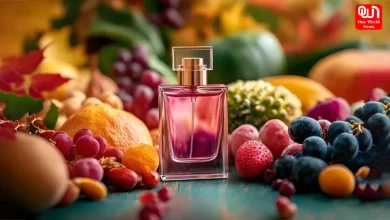Berber Women of Morocco

Berber Women of Morocco
Conserving one’s tradition is really important for everyone. But how often do we try to do just that? Usually, we leave it on others, as in, to the museums or the restorers to take care of the objects, which can help the next generation to have a glimpse of what their tradition originally, was all about. But this is not the case with Berber women of Morocco; the women of Morocco are trying all that is possible to inculcate the knowledge of their traditions to the next generation.

In a conversation with Björn Dahlström, we got to know more about the ‘Berber Women of Morocco’ and the exhibition taking place at Pierre Bergé – Yves Saint Laurent Foundation in Paris.
Berber Women of Morocco, what has been the idea behind this exhibition?
It’s actually the women who are perpetuating the Berber culture. Their extensive knowledge of various art forms, such as weaving and pottery, which talks about their culture through the different objects that they create, they depict their tradition and culture. Each tribe has its own symbols as decoration on the objects which signifies protection and fertility.

The most significant and extraordinary objects are those which are exclusively produced by women: wool woven dresses, capes, also carpets, burnous (woollen Moroccan cloak) and something, which they proudly sport, displaying their tribal affiliation and social status: the jewellery. Both these aspects of female adornment inspired the exhibition. Also, Saint Laurent was deeply influenced by Morocco, where he owned a house since 1966, and where, he designed many of his collections. So, it made sense to organize such an event at the Pierre Bergé – Yves Saint Laurent Foundation in Paris

How old are these ornaments, clothes etc. and how have you restored them?
Most of the objects were collected during the French Protectorate in Morocco (1912-1956). The oldest are probably from the 19th century, or earlier. What is important is that they all attest a way of life which was in effect in Berber Morocco for centuries, if not millennia, until the recent modernization of the Kingdom in the 1960s and 1970s. The rural exodus at the time shook up the tribal organization of Amazigh society, and to preserve their traditions and objects, the Berber Women of Morocco depicted the time through their art form. The spectacular sceno-graphy – the way these objects are displayed – makes this exhibition’s experience poetic and didactic.

How have you tried to restore the history of Morocco?
Before this exhibition was organized in Paris, Pierre Bergé commissioned the creation of a Berber Museum, which opened in 2011 in the former painting studio of Jacques Majorelle – within the Jardin Majorelle in Marrakech. This museum is dedicated to the Imazighen, or Berbers, the natives of Northern Africa, and more specifically to the Berbers of Morocco.

By organizing this exhibition dedicated to the Berber women of Morocco in Paris (which will also be touring afterwards in 2015 at the Bahrain National Museum in the Persian Gulf, the National Library of the Kingdom of Morocco and others Europeans venues), the Pierre Bergé – Yves Saint Laurent Foundation, together with the Jardin Majorelle Foundation based in Marrakech, promote and make possible the understanding of this ancient civilization which has been neglected for these past decades, but which is still at the heart of the Moroccan history and identity.

What difference do you find in women of Morocco in history and now?
In the past, women were transmitting Berber identity through their material savoir-faire and traditional skills. These practices are now nearly extinct since the last few decades vis-à-vis a modern way of life. Nevertheless, women are still perpetuating the Berber culture, mostly through the transmission of the language to their children, and by orally handing down other cultural attributes. We are nowadays mostly talking about an ‘intangible Berber heritage’: music, dance, poetry, cuisine, which are still very much alive in contemporary Morocco. As for the objects, some of them are still produced and in use, but the most extraordinary are now in museums – which keeps them alive too – as they become a cultural heritage. New generations can refer to them and also through this Moroccans can rediscover their origins.

What all art forms are described?
The textiles: capes, dresses, wedding veils, and the accessories are a major highlight of the exhibition. But a big part of the exhibition is also dedicated to exclusive objects, the Berber jewels. Some of them are so big and heavy that it is sometimes difficult to believe they were actually worn by women during their daily chores, among them some very tedious ones such as tent mounting or butter churning, etc. This jewellery was actually the family treasure which had to be preserved, hence worn at all times, and displayed as much as possible to show off one’s women and family wealth. It is also important to explain that these technically advanced and sophisticated jewels were produced in the simple, difficult and rough context of a rural life, which makes them even more astonishing.
Have a news story, an interesting write-up or simply a suggestion? Write to us at info@oneworldnews.in







